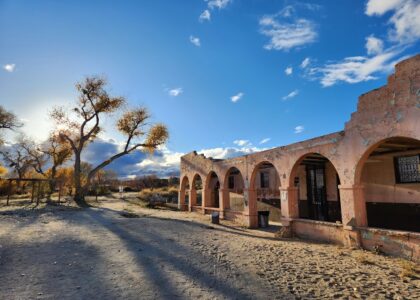Welcome to the John C.C. Mayo Mansion and Office, a significant historical landmark nestled in the heart of Paintsville, Kentucky. As you pass by this grand structure, you’ll be stepping into a story of ambition, industry, and community development that dates back to the late 19th and early 20th centuries.
John Caldwell Calhoun Mayo, the man behind this mansion, was born in 1864 in Pike County, Kentucky. His family moved to Paintsville when he was just a young boy. Mayo’s journey from a humble beginning to becoming one of the most influential figures in the coal industry is both inspiring and remarkable. He was a visionary who recognized the untapped potential of the coal deposits in Eastern Kentucky and Southwestern Virginia.
Mayo’s entrepreneurial spirit shone through when he began acquiring land and mineral rights, often reinvesting his teaching salary into these ventures. In 1888, he founded a real estate company that specialized in acquiring land and mineral rights, eventually transforming it into the Paintsville Coal and Mining Company. By 1901, he had further expanded his empire by founding the Northern Coal and Coke Company, which controlled an impressive 130,000 acres in the Elkhorn Coal Field.
The mansion itself, completed in December 1912, stands as a testament to Mayo’s success and vision. Designed with forty rooms, the mansion was built with the finest materials, including sandstone from Mayo’s father’s farm. Italian stonemasons from Cincinnati crafted the exquisite masonry, and the mansion was one of the first in the area to have electrical wiring and running water, reflecting Mayo’s commitment to modernity and innovation.
Mayo was not only a business magnate but also a community leader. He played a crucial role in developing the infrastructure of Paintsville, bringing the first paved roads to the Sandy Valley and establishing educational institutions like the Mayo College and Mayo Vocational School. His legacy also includes the Mayo Memorial Methodist Church, which he helped build.
Although Mayo never held public office, his influence was felt throughout Kentucky, especially in the political sphere where he supported candidates who were favorable to the coal industry. His efforts also extended to bringing railroads to Eastern Kentucky, facilitating economic growth and accessibility.
As you admire the mansion, imagine the bustling activity of its heyday, the conversations that took place within its walls, and the pivotal decisions that shaped the region’s development. John C.C. Mayo’s story is a fascinating chapter in the history of Kentucky, one of dreams, determination, and lasting impact.





